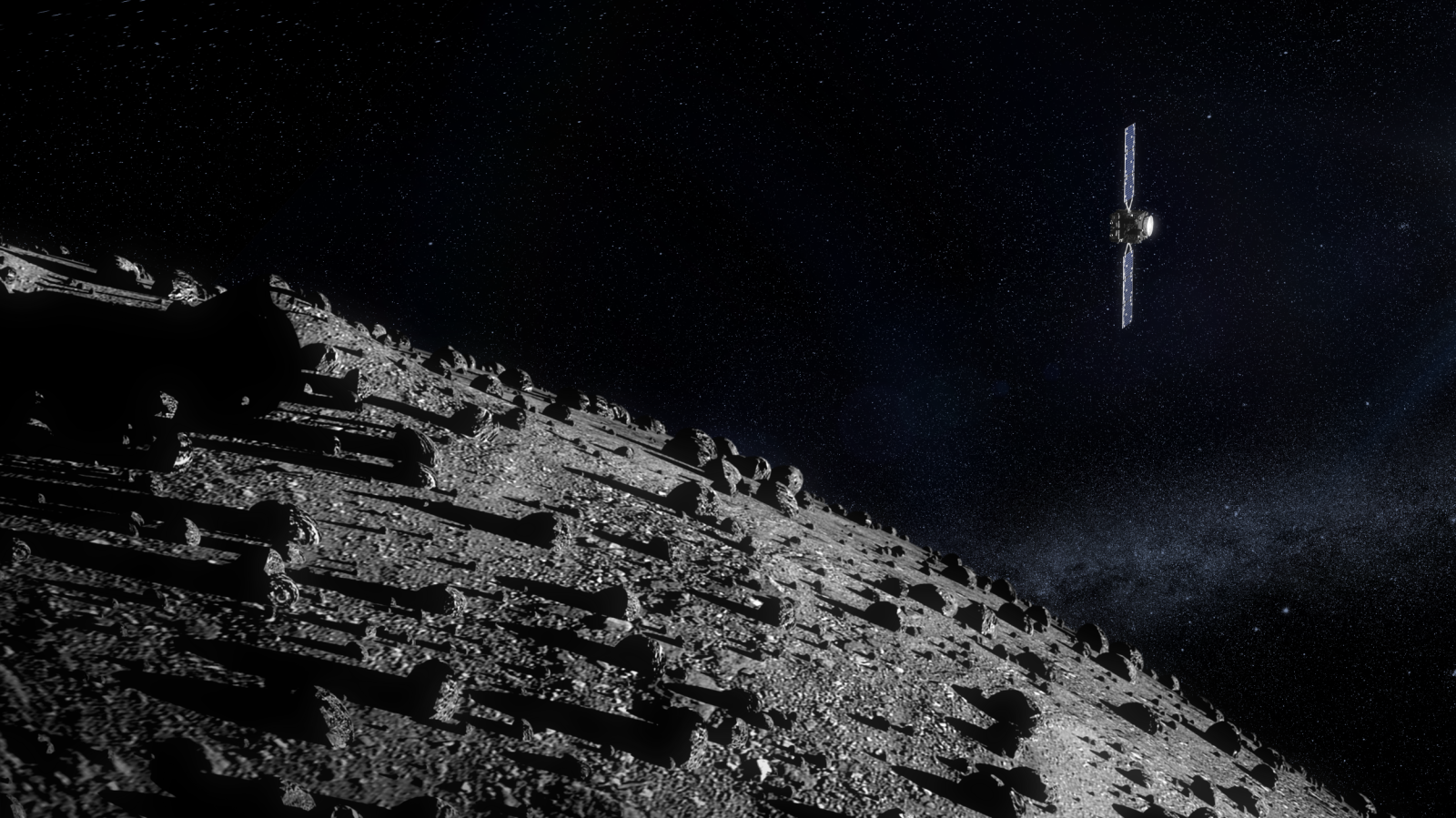Follow us on Google News (click on ☆)
Hera, the European Space Agency's (ESA) first planetary defense spacecraft, launched on October 7, 2024. Its primary target is the asteroid Dimorphos, whose orbit was modified by the impact of NASA's DART probe in 2022.

This artist's rendering shows Hera approaching Dimorphos, in two years.
Credit: ESA-Science Office.
Traveling at an impressive speed of 6 km/s (~3.7 mi/s), Hera is heading toward this unique asteroid, the first to have undergone deflection by human intervention. This historic moment for space exploration raises questions about the safety of our Planet.
Hera is carrying two CubeSats (small cube-shaped satellites): Juventas and Milani. Juventas, equipped with a low-frequency radar, has the mission to explore Dimorphos' gravity. Milani, on the other hand, will focus on Didymos' composition. But the mission goes beyond exploration; it also aims to test advanced technologies. Hera will attempt autonomous navigation, a first for an interplanetary spacecraft.
The progress of this mission is being tracked from the ESA's Space Operations Center in Germany. The team's precision and hard work are essential for the mission's success. The data collected will help validate numerical impact simulations, critical for predicting potential scenarios facing future threats. Collaborative efforts with NASA and other agencies emphasize the importance of this initiative.
Although the current risk of a large asteroid colliding with Earth is low, the Hera mission represents a major advance for planetary defense. It could help determine concrete solutions to deflect threatening asteroids in the future.
What is asteroid deflection?
Asteroid deflection involves altering the path of a potentially dangerous asteroid to avoid a collision with Earth. The techniques considered include kinetic impact, where a spacecraft collides with the asteroid to change its trajectory. This method aims to transfer some of the impact's energy to the asteroid, causing a slight variation in its orbit.
The kinetic impact approach was successfully tested by NASA's DART mission in 2022. DART collided with Dimorphos, a moonlet of the asteroid Didymos, resulting in a measurable change in its orbit. To assess the effectiveness of this technique, missions like Hera are needed to analyze the consequences of such impacts and refine deflection models.
This topic is related to our recent article, where we discussed the debris caused by this human deflection.